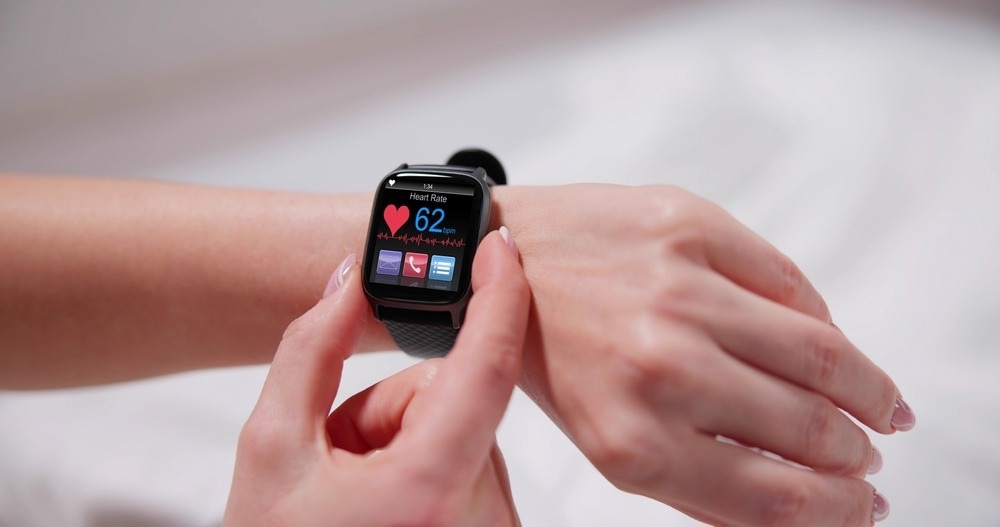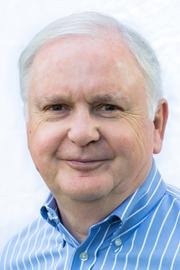In this interview conducted at Pittcon 2024 in San Diego, we spoke to Richard Crocombe about his journey in the field of spectroscopy, focusing on the development of portable spectrometers and their transformative potential in wearable health and fitness technologies.
Could you start by introducing yourself and tell us about your journey in the field of spectroscopy and what inspired you to focus on developing portable spectrometers?
My name is Richard Crocombe. I earned my PhD in inorganic chemistry and vibrational spectroscopy in an era when everything was on chart paper and highly analog. As a postdoc, I used one of the first computerized FTIR spectrometers, a significant advancement at the time. It had 32 K of memory and stored everything, including the operating system, software, and data, on a 5 MB disk.
Nevertheless, it served as the foundation for everything we do today in terms of data acquisition, processing, and results generation. The search systems, quantitative analysis techniques, and other features were developed early in these systems. It was a very exciting time.
I then joined an FTIR company, where I worked for about 20 years, primarily developing applications and instruments. This culminated in the commercialization of mid-infrared hyperspectral imaging using two-dimensional ray detectors. At that point, I felt that the field was becoming technologically mature. Every spectrometer resembled a two-foot-square beige box. However, technologies were becoming available to shrink that down.
I joined a telecom optics company that had developed many miniature optical technologies. We created a near-infrared spectrometer with all of the optics on a small chip. Following that, I worked for other companies and used a variety of other miniature technologies.
I joined Thermo Fisher Scientific and started working with portable X-ray fluorescence, an elemental technique rather than a molecular one. After that, I worked for PerkinElmer, which acquired a portable GC mass spectrometer used in the field. As a result, I thoroughly understood all aspects of portable instruments, including their technologies and applications.
In your extensive experience with spectrometer development, what have been some of the most significant advancements in miniature optical technologies that you have witnessed?
The first wave consisted of optics derived from optical telecoms, such as diode lasers and detectors. This paved the way for portable Raman spectrometers, diode lasers, optical filtering, and CCD detectors in the 1990s. Consumer electronics, computing power, and pocket-sized displays have significantly impacted the advancement of portable instruments.
Your 2018 review article in Applied Spectroscopy comprehensively examined portable spectroscopy. How do you believe the field has evolved since then, especially in terms of technological advancements?
The first thing is that it has grown enormously. After finishing that article, I realized there was still much more to say. In collaboration with Pauline Leary and Brooke Kammrath, I edited a two-volume book of about a thousand pages with 40 chapters on portable instruments.
As these instruments are deployed in various settings, people say, "Can you do X? Can you do Y? We would like to do this." Manufacturers often revisit their processes, developing new databases, calibrations, algorithms, and sampling techniques. However, the core technology remains the same, allowing for new applications.
This cycle also applied to portable X-ray fluorescence and portable Raman since their applications continued to expand while they were on the market.
Pittcon Thought Leader: Richard Crocombe
In your talk at Pittcon 2024, you mentioned the rapid growth of portable spectroscopy. Could you elaborate on what has driven this growth and what challenges have been encountered?
I mentioned this cycle of introducing an instrument, fielding questions about applications, and refining them. However, photonics and consumer electronics technology have continued moving rapidly, allowing instruments to decrease in size continuously.
It is fascinating how engineers have become increasingly skilled at building these instruments. By integrating newer technologies, they have managed to shrink the instruments while improving their performance. This may seem counterintuitive, but now you can get a portable near-infrared instrument the size of a computer mouse, which will perform very well.
The portable Raman instruments are approximately half the size of a brick. Some are even smaller than that, and they perform better than their predecessors. This is quite an achievement for the instrument companies and the engineers. They have also expanded the range of applications by incorporating libraries.
The challenge is that you eventually run out of steam doing it. When an instrument is made smaller, the amount of light it can capture, known as optical throughput or etendue, decreases dramatically, affecting performance. Therefore, the next step is the next generation of photonic-type technologies, and several options are available.
One is a low-cost multispectral sensor, which is not a full-blown spectrometer but still offers valuable multispectral capabilities. This sensor is likely suitable for a variety of applications. Another new technology yet to be widely implemented is silicon photonics or photonic integrated circuits.
A conventional spectrometer typically resembles a cube to allow light to pass through, making it difficult to incorporate it into a smartphone or similar device. Photonic integrated circuits offer the advantage of being planar. Everything can be easily integrated into watches, wearables, rings, or smartphones. This will be the next step, but it will take a few years.
Multispectral sensors are now cheap enough to be incorporated into consumer goods. Prototypes already exist that integrate spectroscopic sensors into a robot vacuum cleaner. This allows you to determine the kind of surface it is on, such as carpet, tile, wood, etc. Therefore, it can adjust its operating parameters accordingly. It can also spot stains and notify you to brush a bit longer in those areas.
Various ideas exist about smart toothbrushes and refrigerators. This technology is being incorporated into wearables, sports watches, and rings.
Your talk also mentions the application of portable spectroscopy in fitness products and health monitoring. Can you elaborate on how these applications transform our approach to personal health and wellness?
Some wearables, such as smartwatches and rings, can do several things. They can measure pulse rate, blood oxygenation, and tissue hydration. Many athletes, especially marathon runners and cyclists who are concerned about their performance, have shown great interest in these products, which are now spreading everywhere.

Image Credit: Andrey_Popov/Shutterstock.com
These methods can be used to monitor general health. Wearable device developers are also exploring ways to expand these technologies.
The Holy Grail is optical, noninvasive blood glucose sensing, eliminating the need for finger sticks. People have been working on this for several decades. It is a very difficult problem. However, newer photonic technologies have the potential to help solve these problems. We may see products in clinical trials in just a few years.
You mentioned new technologies in portable spectroscopy. Which holds the most promise for revolutionary change in the next few years?
In terms of revolutionary change, the existing generation of handheld portable instruments used by hazmat teams, the military, and raw material identification is set to become more mature. I believe integrating multispectral sensors and photonic integrated circuits will play a pivotal role.
This shift toward incorporating spectroscopic sensing into our everyday lives is truly remarkable. An example is the concept of smart toilets, which sounds unusual, but a company has already launched a product in this space.
You have noted the significant cost reduction in producing multispectral devices. How do you foresee this impacting the accessibility and adoption of these technologies in everyday life?
I think once the price drops to less than $10 per device when bought in quantity, it becomes feasible to incorporate them into various household products, consumer devices, wearables, rings, and smartphones. It is impossible to accomplish this task with a large spectrometer and a high cost of goods, whether $10,000 or even $2,000. Incorporating spectroscopic sensors requires reaching these specific levels.
What do you find most valuable about attending and speaking at conferences such as Pittcon, especially regarding the sharing of knowledge in the field of spectroscopy?
What sets this conference apart is the diverse range of attendees. Here, the major instrument companies showcase the latest instrument developments. A large proportion of people from chemical pharmaceutical-related industries and academics also attend this conference.
I believe this sort of cross-fertilization is very good and not typically seen in other academic conferences. Some conferences focus solely on technology, while others are more academically inclined. This conference, however, sits in the middle. The wide range of its attendees and the talks is very valuable.
Professional societies are also very active in this field. Coblenz Society, Society for Applied Spectroscopy, and Royal Society of Chemistry are all partners with Pittcon. They contribute to the program by organizing symposia. These societies also provide opportunities for networking and making valuable contacts. When you combine everything, it becomes a very valuable experience.
As we mark the 75th anniversary of Pittcon, could you share your first memory or experience of attending this conference and how it impacted your view of the scientific community?
I had attended more conventional meetings beforehand. The first conference I attended was in Cleveland, which reveals how long I have been a part of this community if you look up its history. I was impressed by the unique blend of industrial practitioners, instrument companies, and academics and the incredible cross-fertilization of ideas.
What are you most looking forward to at Pittcon 2024 in San Diego?
The weather here is much better than in Chicago. The environment around the Convention Center is also very nice. I find it quite refreshing to visit the West Coast, and I must say, the convention center is rather pleasant.
I like conferences where you can walk everywhere, from the hotel to the conference center to the nearby restaurants, without the need for buses or transportation. It makes for a much better community and a much better experience.
About Richard Crocombe
Richard Crocombe is the Principal at Crocombe Spectroscopic Consulting. He works with both emerging and established instrument companies on miniature optical technologies and handheld/portable spectrometers, go-to-market strategies, and their emerging applicati ons, as well as with companies wishing to use portable spectrometers in their processes.
ons, as well as with companies wishing to use portable spectrometers in their processes.
Prior to this he worked at a number of companies including PerkinElmer, Thermo Fisher Scientific, Axsun Technologies, Digilab, and Bio-Rad Laboratories, mostly concerned with development of new spectrometers and their applications, including FT-IR imaging using focalplane array detectors.
He is a former President (2020) of the Society for Applied Spectroscopy (SAS), and is currently the Editor-in-Chief of SAS's new journal Applied Spectroscopy Practica.
He has published extensively on the technologies and applications for miniature and portable spectrometers, including a comprehensive review article in Applied Spectroscopy in 2018. Richard Crocombe, Pauline Leary and Brooke Kammrath are the joint editors of the two-volume book, ‘Portable Spectroscopy and Spectrometry’, published by John Wiley in April 2021.
About Pittcon
 Pittcon® is a registered trademark of The Pittsburgh Conference on Analytical Chemistry and Applied Spectroscopy, a Pennsylvania non-profit organization. Co-sponsored by the Spectroscopy Society of Pittsburgh and the Society for Analytical Chemists of Pittsburgh, Pittcon is the premier annual conference and exposition on laboratory science.
Pittcon® is a registered trademark of The Pittsburgh Conference on Analytical Chemistry and Applied Spectroscopy, a Pennsylvania non-profit organization. Co-sponsored by the Spectroscopy Society of Pittsburgh and the Society for Analytical Chemists of Pittsburgh, Pittcon is the premier annual conference and exposition on laboratory science.
Proceeds from Pittcon fund science education and outreach at all levels, kindergarten through adult. Pittcon donates more than a million dollars a year to provide financial and administrative support for various science outreach activities including science equipment grants, research grants, scholarships and internships for students, awards to teachers and professors, and grants to public science centers, libraries and museums.
Visit pittcon.org for more information.